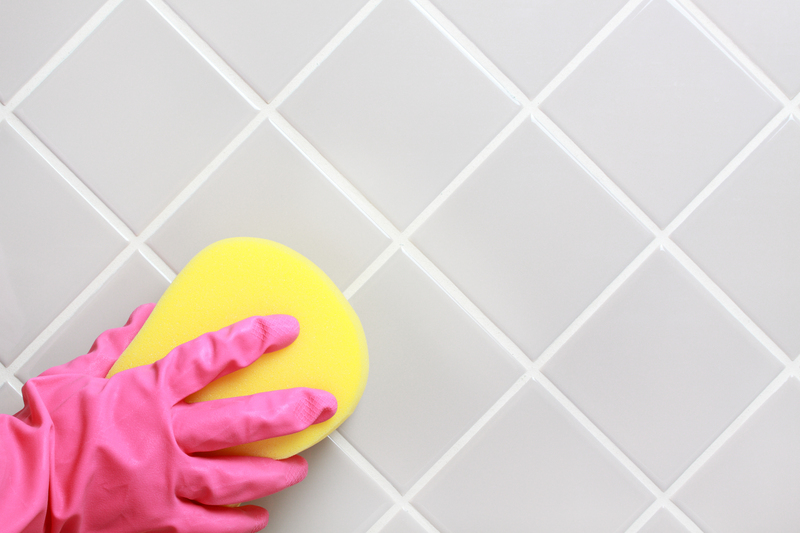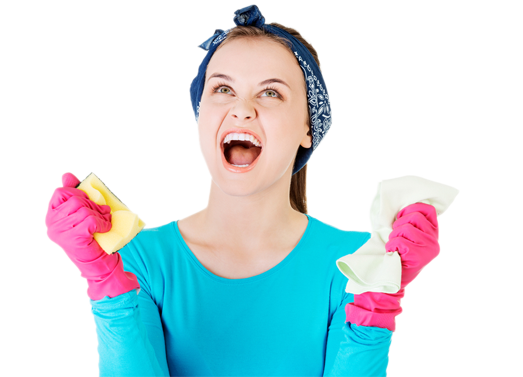Conquer Burnt-on Residue: Stovetop Cleaning Tips and Tricks
Posted on 26/09/2025
Conquer Burnt-on Residue: Stovetop Cleaning Tips and Tricks
Struggling with stubborn, burnt-on residue on your stovetop? You're not alone. Grease splatters and spills can quickly turn a sparkling kitchen into a cleaning nightmare. Understanding the right methods, household solutions, and preventative tricks can help you regain that shine and make stovetop cleaning less of a chore.

Why Does Burnt-on Stovetop Residue Occur?
It's easy to overlook the little spills and splashes while cooking, but over time, these minor messes can bake on, resulting in unsightly buildup. High heat, sugary sauces, and overflowing pots are some of the main culprits behind tough, burnt-on stains. If left unaddressed, the residue hardens and can even degrade the finish of your appliance. Conquering stovetop messes early is the secret to a sparkling kitchen.
Gathering Your Stove Cleaning Arsenal
Before you set out to tackle burnt-on stovetop residue, make sure you're equipped with the right tools. Here's what you need:
- Baking soda - a gentle yet highly effective abrasive
- White vinegar - breaks down mineral and organic deposits
- Non-abrasive scrub pads or microfiber cloths
- Soft-bristled brushes for crevices
- Lemon juice - natural grease cutter
- Plastic or silicone spatula
- Dish soap
- A spray bottle for homemade cleaners
- Razor scraper (for glass tops)
Basic Steps to Clean Any Stovetop
Whether you have a gas range, electric coil, or glass stovetop, the fundamental cleaning process remains similar. Here's a general step-by-step guide:
- Safety First: Ensure your stovetop is completely cool and unplugged.
- Remove Grates and Burner Covers: Take off removable elements and soak in warm, soapy water.
- Clear Loose Debris: Gently wipe away crumbs or loose food with a soft cloth.
- Spray and Soak: Generously spritz the surface with a cleaner (homemade or store-bought) and let sit for 10-15 minutes.
- Scrub Gently: Using a non-abrasive sponge, lightly scrub the surface until stains begin to lift.
- Tackle Burnt-On Spots: For stubborn residue, make a paste of baking soda and water and apply directly to problem areas.
- Let It Sit Again: Allow your paste to rest for 20 minutes for maximum effect.
- Final Scrub and Wipe: Scrub again, then remove any paste or loosened residue with a damp cloth.
- Rinse and Dry: Wipe the entire stovetop with a clean, damp towel and dry with a microfiber cloth for a streak-free finish.
Special Focus: Burnt-on Grease, Sugar, and Other Stubborn Stains
Certain cooking mishaps can create especially difficult stains. Here's how to conquer different types of burnt-on stovetop messes:
Burnt-on Grease
Greasy residue often requires a little extra attention. Mix equal parts vinegar and water in a spray bottle. Spray generously over the area and let soak for 15 minutes. Then, sprinkle baking soda over the top and scrub with a damp sponge. The fizzing reaction helps lift the grime.
Sugar & Syrupy Spills
Caramelized sugars tend to harden into glass-like crusts. To soften, soak a cloth in hot water and lay it over the mess for 10-15 minutes. Gently scrape the softened sugar with a plastic scraper--never metal to avoid scratches. Repeat if necessary, using white vinegar to help dissolve sticky spots.
Charred & Carbonized Foods
For foods that have become completely blackened, a razor blade scraper (for glass tops) can be invaluable. Hold at a low angle and gently work under the residue without gouging the glass. Finish with a baking soda scrub for any remaining haze.
Natural Homemade Stovetop Cleaners
Commercial cleaners get the job done, but if you prefer non-toxic, eco-friendly solutions, try these DIY formulas:
- Lemon & Baking Soda Paste: Combine juice from half a lemon with 3 tablespoons of baking soda to form a gritty paste. Spread, wait 15 minutes, and scrub away stains.
- Vinegar Spray: Mix equal parts white vinegar and water. Spray after each cooking session to prevent buildup.
- Cream of Tartar Solution: Mix 1 tablespoon cream of tartar with a few drops of water for tough spots. It's especially useful for stainless steel finishes.
- Hydrogen Peroxide & Baking Soda: Combine for a powerful, fizzing action on stubborn stains. Allow the mixture to bubble for several minutes before wiping clean.
Stovetop Cleaning Techniques by Appliance Type
1. Gas Stove Cleaning Tips
Gas stoves often come with heavy iron grates and intricate burner heads, collecting all manner of spills. Here's how to effectively clean and maintain your gas stovetop:
- Remove grates and burner caps and soak in hot, soapy water for at least 20 minutes.
- For severe residue, let them soak overnight in a sealed bag with a little ammonia (in well-ventilated areas).
- Use a soft brush or old toothbrush to clear burnt-on gunk from burner holes and crevices.
- Wipe the main surface with a vinegar and baking soda solution, avoiding igniter and electrical components.
- Dry thoroughly before reassembling to prevent rust.
2. Electric Coil Stove Cleaning
Electric coils are prone to splashes and spills, but with proper attention, cleaning is straightforward:
- Unplug or turn off power before cleaning.
- Lift and remove the coils (if possible), then wipe with a damp cloth and mild dish soap. Avoid submerging coils in water.
- Remove drip pans and soak in soapy water.
- Use a paste of baking soda and water for burnt-on food, then wipe with a damp cloth.
- Let everything dry completely before reassembling.
3. Glass and Ceramic Stovetops
Smooth-top stoves require special care to keep them unblemished and shiny:
- Wipe down daily with a microfiber cloth to prevent minor spills from becoming tough stains.
- Apply a paste of baking soda and hydrogen peroxide for old, burnt-on residues. Let sit for 15-20 minutes.
- Use a razor scraper for stubborn, stuck-on spots, holding it at a 45-degree angle to prevent scratches.
- Buff the surface with vinegar to restore shine and remove streaks.
Expert Tips to Prevent Burnt-on Stove Messes
The best way to deal with tough stovetop stains is to avoid them altogether. Here are top tips to keep your cooking surface spotless:
- Wipe spills immediately. The sooner you clean, the less time residue has to harden.
- Use splatter guards when frying or simmering sauces.
- Keep a damp cloth nearby while cooking for quick cleanups.
- Deep clean weekly--a quick 10-minute scrub every week is easier than battling months of buildup.
- Line drip pans and areas around burners with aluminum foil or reusable burner liners for easy removal and reduced mess.
- Clean burnt-on stains before using additional heat, as reheating makes stains even harder to remove.
Avoid Common Stove Cleaning Mistakes
While you're conquering burnt-on stovetop residue, beware of these cleaning pitfalls:
- Never use steel wool or harsh abrasives; they can damage enamel, glass, or stainless finishes.
- Don't let water seep into electrical parts or burner connections--always wring out sponges well.
- Skip bleach and ammonia mixtures--these are toxic and unnecessary for kitchen cleaning.
- Always let surfaces cool before using any cleaning method to avoid burns and improve effectiveness.
If in doubt, check your manufacturer's guidelines to prevent voiding warranties or damaging specialty stovetop coatings.
Stovetop Cleaning Myths--Busted!
There's a lot of misinformation online about quick fixes for burnt-on residue. Let's clear up some common myths:
- Lemon alone isn't enough: While lemon has mild degreasing properties, it requires abrasive action (like baking soda) to truly tackle burnt messes.
- Glass cooktops aren't scratch-proof: Using the wrong tool can permanently scar even the toughest models. Always use recommended scrapers and pads.
- Soap won't remove heavy carbon: Regular dish soap helps but needs reinforcement--like baking soda or commercial stovetop cleaners--for lasting results.
- "Self-cleaning" isn't a cure-all: Some believe running a self-cleaning cycle (for ovens) will clean the stove. It won't--the stovetop needs separate attention.
Choosing the Best Products for Stovetop Cleaning
If commercial solutions are more your style, look for these features when choosing a stovetop cleaner:
- Non-abrasive formulas safe for your appliance's surface
- Grease-cutting agents (citrus extract, vinegar, or specific detergents)
- No harsh fumes--especially important in small kitchens with poor ventilation
- Residue-free finish
- Compatibility with your stove type: glass, induction, enamel, or stainless steel
Read product reviews and always test a new cleaner on a small, hidden area first.
Keeping Your Stovetop Gleaming Longer
Regular maintenance will dramatically reduce the time and elbow grease needed to keep your stovetop beautiful. Follow these steps:
- After cooking, let the stovetop cool, then wipe with a damp microfiber cloth to remove fresh residues.
- Once a week, use a baking soda paste for a light scrub, regardless of visible stains.
- Polish glass or ceramic tops with a vinegar solution for a streak-free, glossy finish.
- Check and clean burner elements monthly to prevent clogs and uneven heating.
- Replace drip trays or liners as soon as they become worn or too dirty to clean.

FAQs: Mastering Stovetop Cleaning
- How often should I deep clean my stovetop?
Aim for a quick daily wipe and a thorough scrub once per week, or more frequently if you cook often. - Can I use magic erasers on my stove?
Yes, but use them gently and avoid on glossy surfaces to prevent dulling or scratching. - How do I remove stubborn stains from a white enamel stovetop?
Use a paste of hydrogen peroxide and baking soda for safe, effective whitening power.
Conclusion: Conquer Burnt-on Residue and Enjoy a Spotless Stove
With a combination of proactive habits, natural cleaning recipes, and the right techniques, conquering burnt-on stovetop residue is entirely doable. Remember, the best results come from consistency--a little effort after every meal goes a long way in maintaining a sparkling kitchen. Try out these stovetop cleaning tricks today, and say goodbye to stubborn stains for good!





